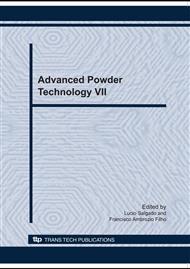p.718
p.724
p.730
p.739
p.746
p.752
p.757
p.765
p.771
Crystalline Structure and Microstructural Characteristics of the Cathode/Electrolyte Solid Oxide Half-Cells
Abstract:
The solid oxide fuel cell (SOFC) is an electrochemical device generating of electric energy, constituted of cathode, electrolyte and anode; that together they form a unity cell. The study of the solid oxide half-cells consisting of cathode and electrolyte it is very important, in way that is the responsible interface for the reduction reaction of the oxygen. These half-cells are ceramic materials constituted of strontium-doped lanthanum manganite (LSM) for the cathode and yttria-stabilized zirconia (YSZ) for the electrolyte. In this work, two solid oxide half-cells have been manufactured, one constituted of LSM cathode thin film on YSZ electrolyte substrate (LSM - YSZ half-cell), and another constituted of LSM cathode and LSM/YSZ composite cathode thin films on YSZ electrolyte substrate (LSM - LSM/YSZ - YSZ half cell). The cathode/electrolyte solid oxide half-cells were characterized by X-ray diffractometry (XRD), scanning electron microscopy (SEM) and energy dispersive X-ray spectroscopy (EDS). The results have been presented with good adherence between cathode and electrolyte and, LSM and YSZ phases were identified.
Info:
Periodical:
Pages:
746-751
Citation:
Online since:
October 2010
Price:
Сopyright:
© 2010 Trans Tech Publications Ltd. All Rights Reserved
Share:
Citation:


